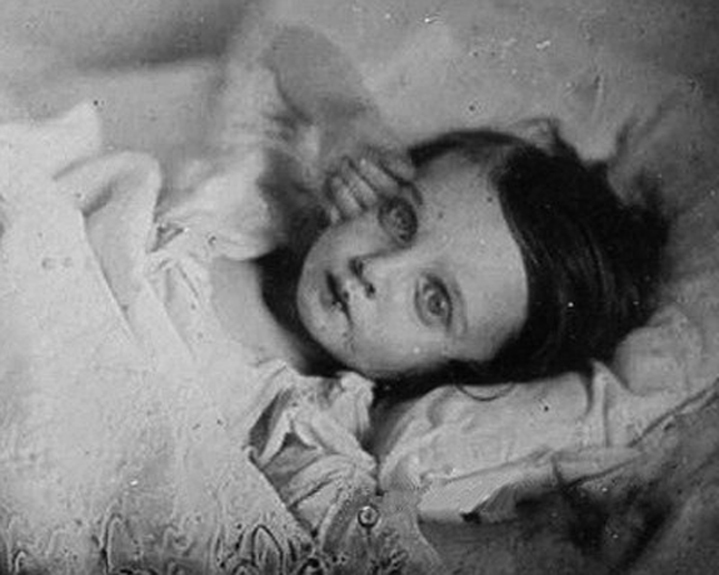
Why, why should I the World be minding,
Therein a World of Evils Finding.
Then Farwell World: Farwell thy jarres,
thy Joies, thy Toies, thy Wiles, thy Warrs.
Truth Sounds.
Retreat: I am not sorye. The Eternall Drawes to him my heart,
By Faith (which can thy Force Subvert)
To Crowne me (after Grace) with Glory.
–Thomas Smith
Once upon a time there was no Instagram, (That’s right! It is actually hard to fathom a life without a cell phone with which you can take pictures, videotape or check-in, in sum, and document your daily life.) Back in 1839 the daguerreotype was an innovation, a real breakthrough in photography. Still, subjects had to sit still for about 20 minutes for a photograph to develop, which, believe it or not, was a huge step up from having to sit for a painted portrait. This is when “Memento Mori,” or the taking pictures of your deceased loved ones, really took flight. Photography was still young and expensive in the Victorian era, hence the emergence of Memento Mori. Dead people are really good still models.
 There might be something unsettling about pictures of dead people, even when they are as beautiful and serene as these Victorian post-mortem photographs, where the dead posed as if asleep. I bet the Victorians too would have preferred to have a photo of the person while he or she was still alive, but photography was too expensive, and sometimes people died without there being a single photograph to remember them by. Especially children, having a higher mortality rate back then, were usually never photographed, until it was too late. The moment after someone’s death was the last chance to take a memory of them, and post-mortem photographs were displayed along with the normal family photographs.
There might be something unsettling about pictures of dead people, even when they are as beautiful and serene as these Victorian post-mortem photographs, where the dead posed as if asleep. I bet the Victorians too would have preferred to have a photo of the person while he or she was still alive, but photography was too expensive, and sometimes people died without there being a single photograph to remember them by. Especially children, having a higher mortality rate back then, were usually never photographed, until it was too late. The moment after someone’s death was the last chance to take a memory of them, and post-mortem photographs were displayed along with the normal family photographs.
Though we might find it macabre, there was nothing odd or disgusting about this practice. In fact, it was practical and understandable when one considered the odds that were stacked against those who lived at this time in history. Most people then couldn’t afford modern funerals, so the dead had to be quickly buried, preventing family from far away from being able to arrive in a timely manner.
The deceased person would be usually arranged in a posed natural setting. If they were a carpenter they would be placed in a woodshed, if they were a priest in a church, a baby would be positioned in a nursery. The body might be posed along other family members as if all was normal and well, their eyelids painted over, to pretend they were awake. In most cultures, death has never been a scary event; it is scary only to those who live without you. Nowadays a new-found appreciation for post-mortem photography has sprouted with gallery showcases around the world. Dead or not, I say: This is a beautifully morbid custom.
TXT: JESSICA VILLA

